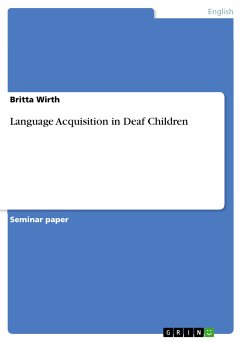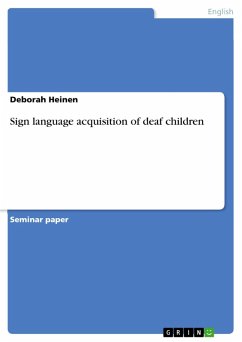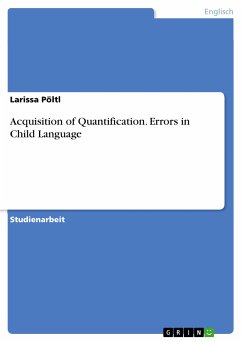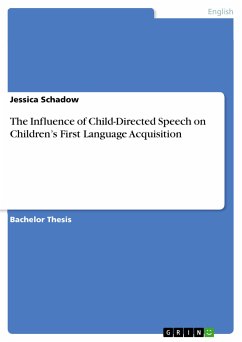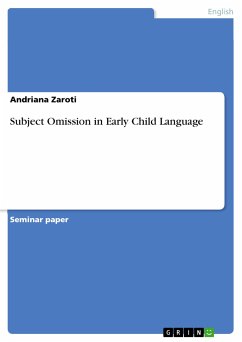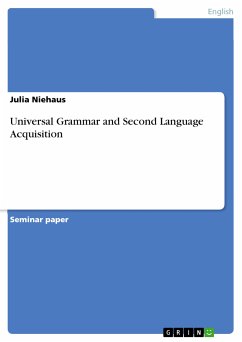Seminar paper from the year 2005 in the subject English Language and Literature Studies - Linguistics, grade: 1,7, Ruhr-University of Bochum (English Department), course: Child Language Acquisition, language: English, abstract: Language acquisition has been studied for a long time, but it is not completely understood yet. Charles Darwin may have been the first to examine the development of a first language and he assumed that humans have an instinct to learn language. Later on this idea was replaced by the notion that the acquisition of language is a sociocultural phenomenon. In the early 1960s the linguist Chomsky presented a new explanation: he said that children learn a language in the same way, for example, as they learn to walk upright, because it is part of their nature and not because it is a form of their culture. Thus language acquisition has a natural course of development.1If this theory is absolutely right or not is still being argued but shall not be the prior topic of this paper. This work shall examine what happens if children are hearing impaired. Are they able to follow the usual process of language acquisition or not. In order to assess the consequences of language acquisition affected by physical disability, one has to consider a ‘general’ process of language development first. There are various factors which have an influence on a child’s process of language acquisition. How large the impact of a specific factor is varies from theory to theory. Nevertheless, linguists agree that the “grammatical structure, the possible innate language acquisition mechanisms or biases as well as the biological or cognitive maturational factors and the nature of the language input to the child and the social context in which it takes place” influence a child’s language development. No matter which factor has the most impressive impact on a child’s speech progress, by the age of four years he or she usually has a good command of the basic vocabulary, syntax and phonology. This language proficiency is found in all healthy children all over the world.

